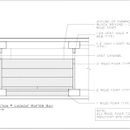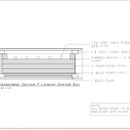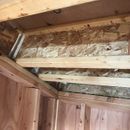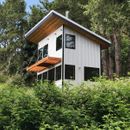Insulation at Lookout Rafter Bays
This question is related to my other question, here: https://www.greenbuildingadvisor.com/question/kraft-faced-insulation-at-shed-roof
The Lookout Rafter Bays are perpendicular to the main rafter bays. So for those, we did smaller vent holes in the webs of the lookout rafters. Please see attached detail. The R-38C insulation that we’re using in the main rafter bays would block the vent channel, so I am thinking of using rigid foam in these lookout bays. The R-value of the layered rigid foam should be similar to that of the R-38C used in the main rafter bays. The project is in the Columbia Gorge, in Climate Zone 5B. The R-value will be below the code minimum, but we have approval from the building inspector.
Because of thermal drift and my wife’s concerns about Polyiso, we are thinking about using Insulfoam EPS. I have not found a local supplier for recycled EPS in thick boards, so we are planning on using the cut and cobble method (layering it). The ceiling will have drywall with latex paint and primer.
Question 1) The Insulfoam has foil on one side. Do I need to provide a vapor-retarder layer between the bottom layer of rigid foam and the drywall?
GBA Detail Library
A collection of one thousand construction details organized by climate and house part














Replies
Hi again. I am hoping to buy the materials today. If I need to change anything, please let me know ASAP.
Miles, your plan should work fine as far as I can tell. When you have thick layers or assemblies of polyiso, thermal drift is less of an issue because only the outer few inches are really affected. EPS is about R-4 per inch, depending on brand and density, so you don't gain much compared to batts at about R-3.5/in, but you aren't using enough to worry too much about the climate impact. Vented roofs in cold climates are very forgiving, in most cases. You don't need anything special between the insulation and the drywall.
OK, great. Thanks very much,
Miles